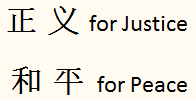Current Issues
Japan fails to fulfill treaty obligations from WW II
September 2012
Inconsistent Foreign Policy May Drag U.S. Into Another War
By adopting an ambiguous and internally inconsistent policy toward the territorial dispute over the Diaoyu Islands/Senkaku Islands between China and Japan (former name used by China and latter name used by Japan), U.S. government leaders may be dragging the U.S. into a war in Asia that has no moral or legal basis. The U.S. government, on many occasions, has stated that sovereignty of these islands is unsettled, yet has also stated that these islands are covered under the U.S.-Japan Mutual Defense Treaty.
What is the full history?
China’s Claim
Starting as early as 1372, many Chinese historical documents and maps have recorded that the Diaoyu Islands are part of Chinese territory. For example, the names of Diaoyu Dao (Dao in Chinese means island, and Diaoyu Dao is the largest island among the Diaoyu Islands) and several adjacent islands were named in the book Voyage with a Tail Wind published in 1403 in the Ming Dynasty. Several historical documents from officials of the Ryukyu Kingdom also marked the separating line between the Ryukyu Kingdom and Chinese territory, and the Diaoyu Islands were part of Chinese territory. Besides Chinese maps, many foreign maps also show that the Diaoyu Islands belong to China. For example, in the map included in the 1785 book Illustrated Outline of the Three Countries by the Japanese author Hayashi Shihei, the Diaoyu Dao was colored the same as the mainland of China. In The Map of East China Sea Littoral States by the French cartographer Pierre Lapie and others in 1809, the Diaoyu Islands were colored the same as that of Taiwan. The map Colton’s China published in the U.S. in 1859 marked the Diaoyu Islands as part of China.
The waters surrounding the Diaoyu Islands are traditionally Chinese fishing ground. For centuries, Chinese fishermen have engaged in fishery activities in these waters, and the Chinese people living in Taiwan and China’s southeast coast have used Diaoyu Dao as a navigation marker. As early as the Ming Dynasty, China had placed the Diaoyu Islands under its coastal defense to guard against the invasion of Japanese pirates. The Qing Dynasty, just like the Ming Dynasty, had also included the Diaoyu Islands as part of China’s coastal defense, but had also clearly placed the Diaoyu Islands under the jurisdiction of the local government of Taiwan.
It is also important to note that the Diaoyu Islands are about 100 nautical miles from Taiwan and is on Taiwan’s continental shelf, but about 200 nautical miles from Okinawa and separated by a deep trough. We also want to mention two other historical events that occurred during the period when Taiwan and the Okinawa Prefecture were under the control of Japan. One was a 1940 court case initiated by Okinawans on who has jurisdiction over the Diaoyu Islands, and after more than a year of investigation, a Tokyo court ruled that the Taiwan Province should have jurisdiction. Another was that before 1945, in order for fishermen to go near the Diaoyu Islands to fish, they had to obtain a permit from a jurisdiction in Taiwan.
Therefore, historically, geographically, and legally, for many centuries these islands have been part of Taiwan, and therefore China.
Japan’s Claim
Japan claims that they discovered the Diaoyu Islands in 1884, and started exploring these unoccupied and unclaimed islands, and then annexed them on January 11, 1895 as part of the Okinawa Prefecture. What Japan does not state is that their exploration took place several centuries after it had been known to the world, including Japan, that the Diaoyu Islands have been part of China, and furthermore that their own government documents clearly show that Japan had been involved in a secret plan to steal the Diaoyu Islands from China. As a matter of fact, a secret report was sent on September 22, 1885 from the governor of Okinawa Prefecture to Japan’s Minister of Internal Affairs regarding setting up sovereignty markers to incorporate the Diaoyu Islands into the Okinawa Prefecture. The report stated that these uninhabited islands were, in fact, the same as the Diaoyu Islands that were recorded in various Qing court documents. They were concerned about China’s objection to their planned annexation. That was why Japan hesitated to annex the Diaoyu Islands to become part of the Okinawa Prefecture until January 11, 1895 when it was clear that Japan was going to win the First Sino-Japanese War (that ended on April 17, 1895). Even this annexation decision was done in secrecy; Japan did not publicly announce this action. This secret scheme of trickery is well documented in Japan’s own government documents, as pointed out by independent analyses by Han-Yi Shaw, a Chinese scholar in Taiwan, and Professor Kiyoshi Inoue, a Japanese historian at Kyoto University. Both concluded that there is no doubt that the Diaoyu Islands belong to China.
How Should the Dispute Be Settled?
To any objective person, there is no doubt that the Diaoyu Islands clearly belong to China. The Cairo Declaration, the Potsdam Declaration, and the 1945 Japanese Instrument of Surrender all stated clearly that Japan should return to China: Taiwan and other territories that Japan had stolen from China. This therefore means that when Japan returned Taiwan to China after the end of WWII, the Diaoyu Islands were also returned to China, and the case should have been closed.
Why is there still a dispute?
U.S. Collusion
However, after the Chinese Communist Party won the civil war in China in 1949, the U.S. adopted a policy to weaken and contain China. Starting in the early 1950s, the U.S. began to use Japan as its partner and pawn, and adopted an antagonistic attitude toward China. This antagonistic attitude toward China had many manifestations. One obvious one was not inviting China, either the government of the Republic of China (ROC) or the People’s Republic of China (PRC), to the 1951 San Francisco Peace Treaty, when China was one of the victorious countries and the country that suffered the most casualties and atrocities under the hands of the Japanese Imperial Army during WWII. From the very beginning, the People’s Republic of China stated that “If the People’s Republic of China is excluded from the preparation, formulation and signing of the peace treaty with Japan, it will, no matter what its content and outcome are, be regarded as illegal and therefore invalid by the central people’s government.” The San Francisco Peace Treaty was signed on September 8, 1951, and placed the Ryukyu Islands under UN’s trusteeship, with the U.S. as the sole administering authority.
However, even the San Francisco Peace Treaty did not include the Diaoyu Islands as part of the territory of the Ryukyu Islands. It was more than a year later on December 25, 1953, when the U.S. unilaterally expanded the territory of Ryukyu Islands to include the Diaoyu Islands! Then in 1972 the U.S. handed over to Japan the administrative control of the Ryukyu Islands, including the Diaoyu Islands. This unilateral decision of the U.S. ignored completely the historical evidence and the decisions of the Cairo Declaration, the Potsdam Declaration, and the 1945 Japanese Instrument of Surrender in which the U.S. played the primary role. This decision not only planted a seed for dispute, but at the same time also helps to re-militarize an expansion-minded Japan, a country that still has not acknowledged and apologized for the massive atrocities it committed in China and Asia during WWII, and a country that unleashed the Pearl Harbor surprise attack on the U.S.
Recent Developments
In spite of repeated strong statements from both the PRC and ROC that the Diaoyu Islands clearly belong to China, the Japanese government “purchased” the Diaoyu Islands on September 10, 2012 from the so-called Japanese private “owners” of the islands and then nationalized it. How can there be Japanese private owners and how can the Japanese government purchase and nationalize lands that belong to another country? This latest action has resulted in even stronger statements from the PRC and the ROC, warning Japan that if it does not stop its actions to steal lands that clearly belong to China, Japan will have to bear all consequences.
U.S. Now Pursues An Inconsistent Foreign Policy
The stakes and tension have been raised in the East China Sea between Japan and China. It could very well lead to military actions and war. Yet, the U.S. government has continued to stick with its ambiguous and internally inconsistent policy of stating that the sovereignty of these islands is unsettled, but these islands are covered under the U.S.-Japan Mutual Defense Treaty. Will the U.S. be courageous enough to adopt a policy that is fair and agrees with the facts? Is the U.S. willing to be dragged by Japan into a war in the East China Sea that it has no moral or legal reasons to be involved? Will the American people stand by while her sons and daughters fight in an unjustified war far away from home? In the current new world order, China will be the major economic competitor to the U.S. However, should the U.S. continue to adopt an antagonistic attitude to weaken and contain China, or should the U.S. adopt a more collaborative approach with China that could lead to a win-win-win situation for the U.S., China, and world peace?
--Prepared by Dr. Don Tow
Resurgence of Japanese Imperialist Ambitions?
In 2012, Japan has pressed not only an issue of Diaoyu Islands' sovereignty, but also the issue of Dokdo Islands' sovereignty, which have always been part of Korea and are claimed by the Korean government. Moreover, sovereignty of islands claimed by Russia has been similarly challenged by the Japanese government as well. Are we now witnessing a re-birth of Japanese Imperialism? The world recalls that Japan’s earlier imperial ambitions led to the Pacific War in Asia and the loss of 50 million lives. The U.S. must make it clear to the Japanese government that the U.S. does not support Japan's illegal actions, and that Japan must honor its commitments under the 1951 San Francisco Peace Treaty.
The U.S. must also reverse any public statement that “Diaoyu Islands fall into a security and cooperation treaty between Washington and Tokyo,” implying the U.S. will help Japan maintain illegitimate occupation of this or any Chinese territory.
The U.S. must not be dragged into this mess, which was created by right-wing extremists in Tokyo.
Nanjing--
March, 2012
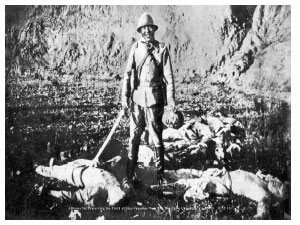 |
 |
Nanjing-- Unbelievably, in March, 2012, the mayor of Nagoya, Japan, Takashi Kawamura, denied the Japanese Army’s 1937 Nanjing Massacre in which 300,000 were murdered and 80,000 women raped occurred. Nanjing has formally suspended its sister-city relationship with Nagoya as reported in the New York Times. |
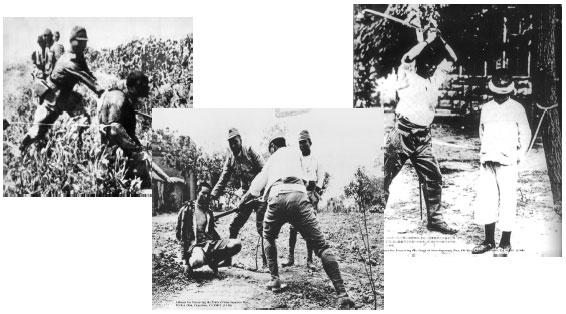
|
A Global Alliance press release insists that this Japanese
mayor of Nagoya, Takashi Kawamura, offer an official
apology and withdraw his outrageous statement of denial.
The curator of the Nanjing Massacre Memorial Hall, Zhu
Chengshan, defends the truth of the Nanking Massacre and
the honor of the Chinese people. He justly denounces
Takashi Kawamura's remarks, thundering, "Nonsense!"
Site of Jinling Girl's College on the campus of Nanjing University, where tens of thousands of young women found safety from marauding Japanese soldiers in 1937. Minnie Vautrin, Headmistress of Jinling became known as the Angel of Nanjing for her efforts to save her students from the Japanese. |
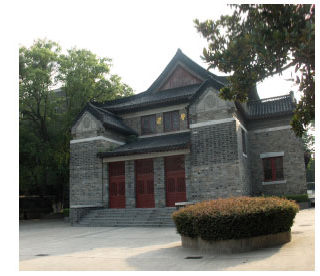 |
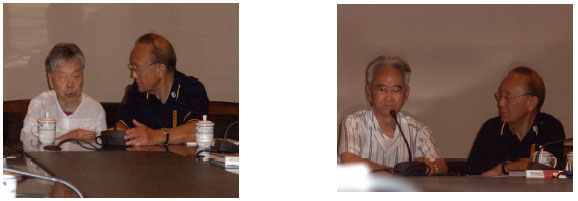
| Surviving victims of the Japanese describe the horror of Nanjing. Young children at the time, they were abused by
Japanese soldiers after witnessing their parents and close family slaughtered.
Ms. Tian, kidnapped by the Japanese as a young girl and forced into sex slavery, asks only that we, "Tell my story." |
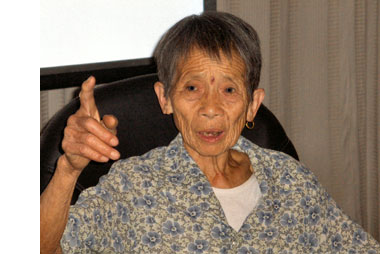 |
Korea--
December, 2011
|
In Seoul, Korea, surviving sex slaves
of the Japanese Imperial Army mark
their 1000th consecutive Wednesday
demonstration at the Japanese
Embassy, December, 2011. Joined by
a bronze sculpture of a young girl in
traditional clothes, who sits and
waits for an official Japanese
government acknowledgment and
apology. She appears to be of an age when these sex slaves were kidnapped by the Japanese during the war. Next to her an empty chair, perhaps representing former sex slaves who have passed away, but who still wait, their demands still unfulfilled. When will the Japanese government acknowledge these atrocities and war crimes? When will they offer sincere apology and just compensation to these victims? Why do high Japanese government officials insist on denial and why do they continue to lie to protect the convicted war criminals and sadistic killers of the Japanese Imperial Army? |
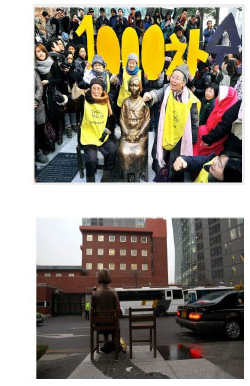 |
Denial legislation--
Public outrage throughout Asia at the public denial of the Asian Holocaust by Takashi Kawamura, Mayor of Nagoya, Japan resulted in the city of Nanjing, China formally ending a sister city relationship with Nagoya.
To this day high Japanese government officials, including members of the Diet, publicly deny the Asian Holocaust and regularly worship the memory of convicted Class A war criminals and sadistic thugs at the infamous Yasukuni Shrine in Tokyo as if they were gods.
The time has arrived when civilized nations can no longer tolerate these practices and abuse. Following World War II, publicly denying the European Holocaust has been illegal in Germany and in 17 European countries. Penalties include imprisonment and substantial fines.
The Global Alliance denounces Holocaust denial anywhere in the world and wholeheartedly supports the growing movement to pass legislation with respect to the Asian Holocaust. Japan must be held accountable for the actions of its government officials.
